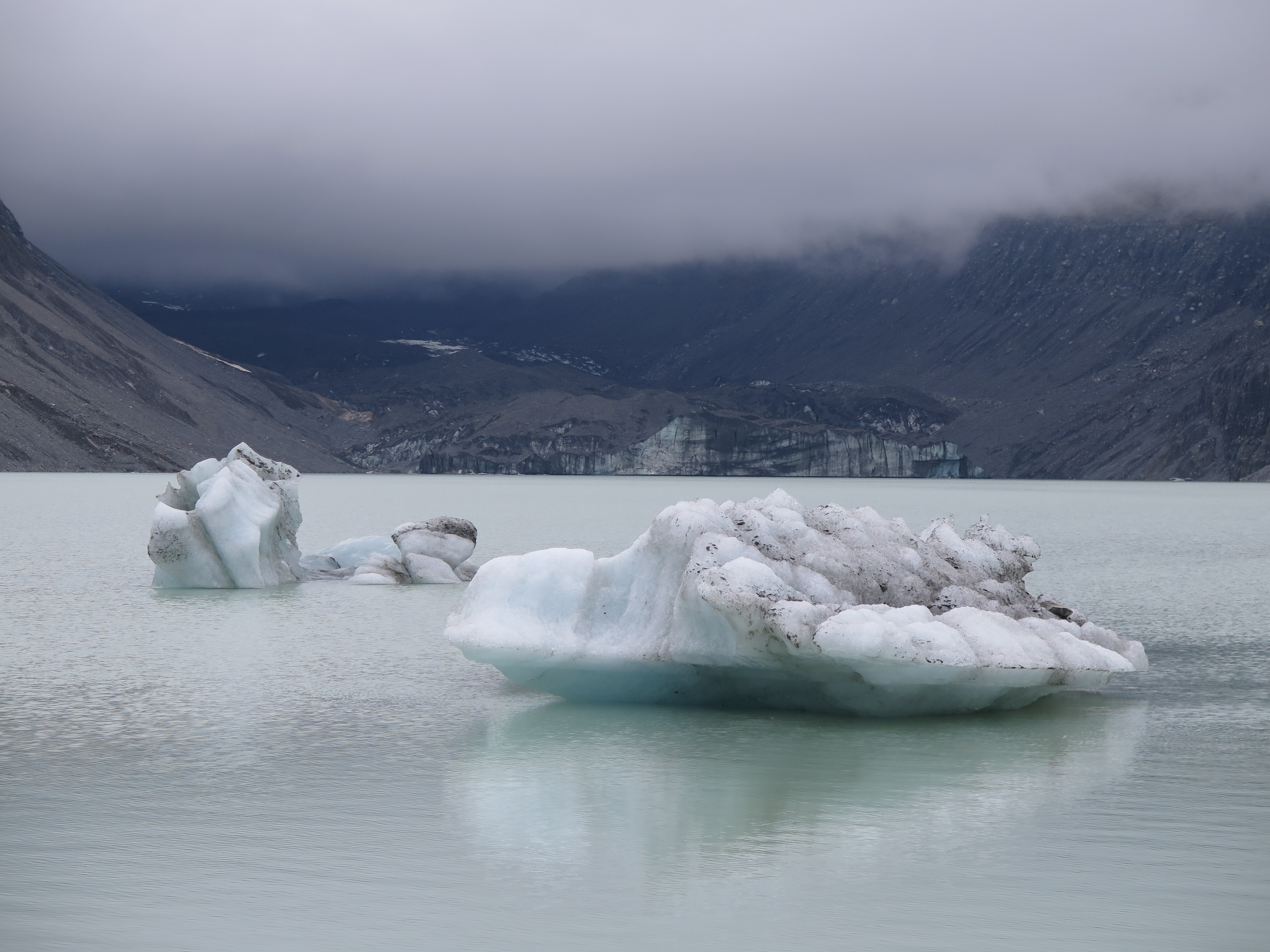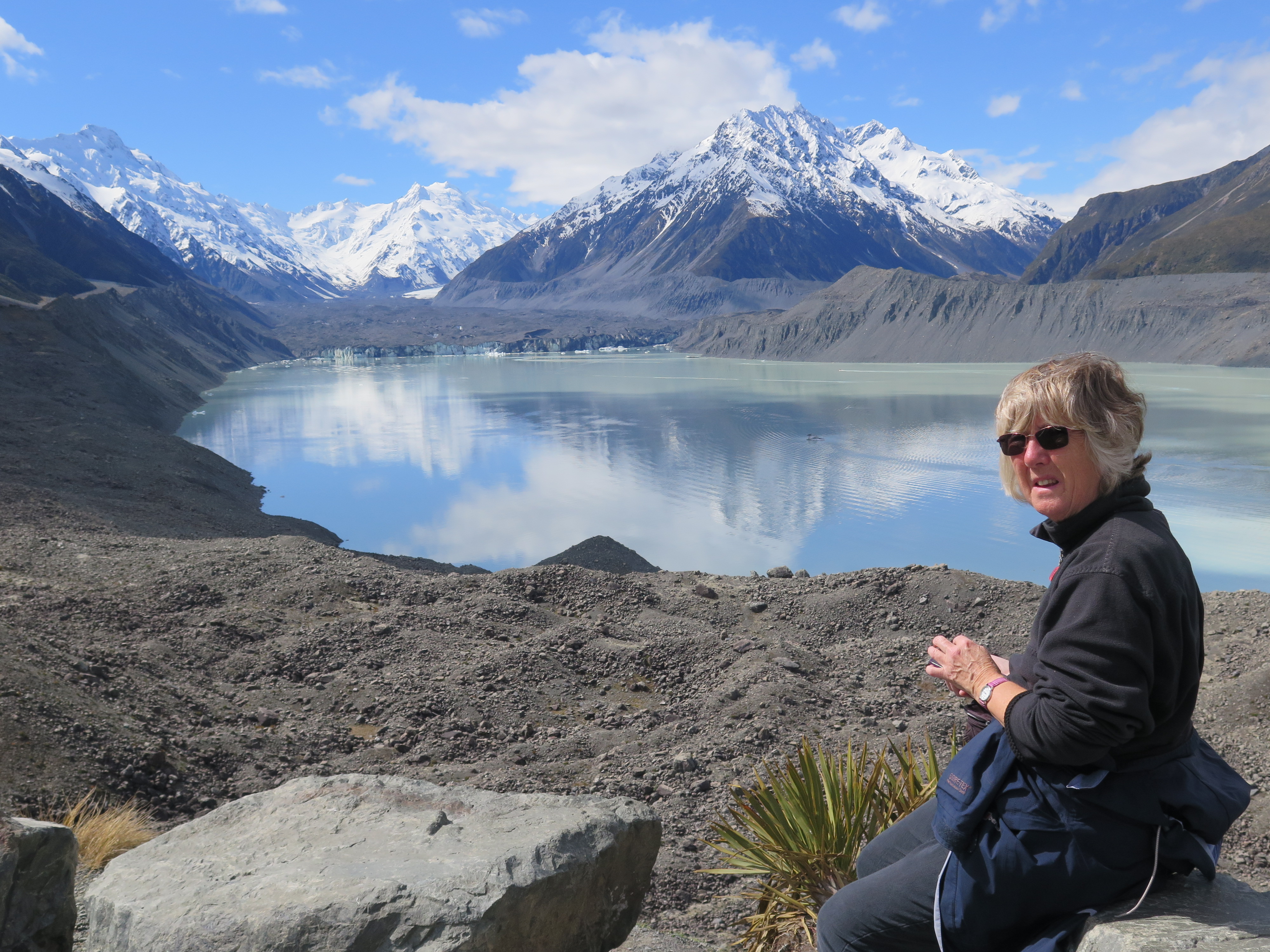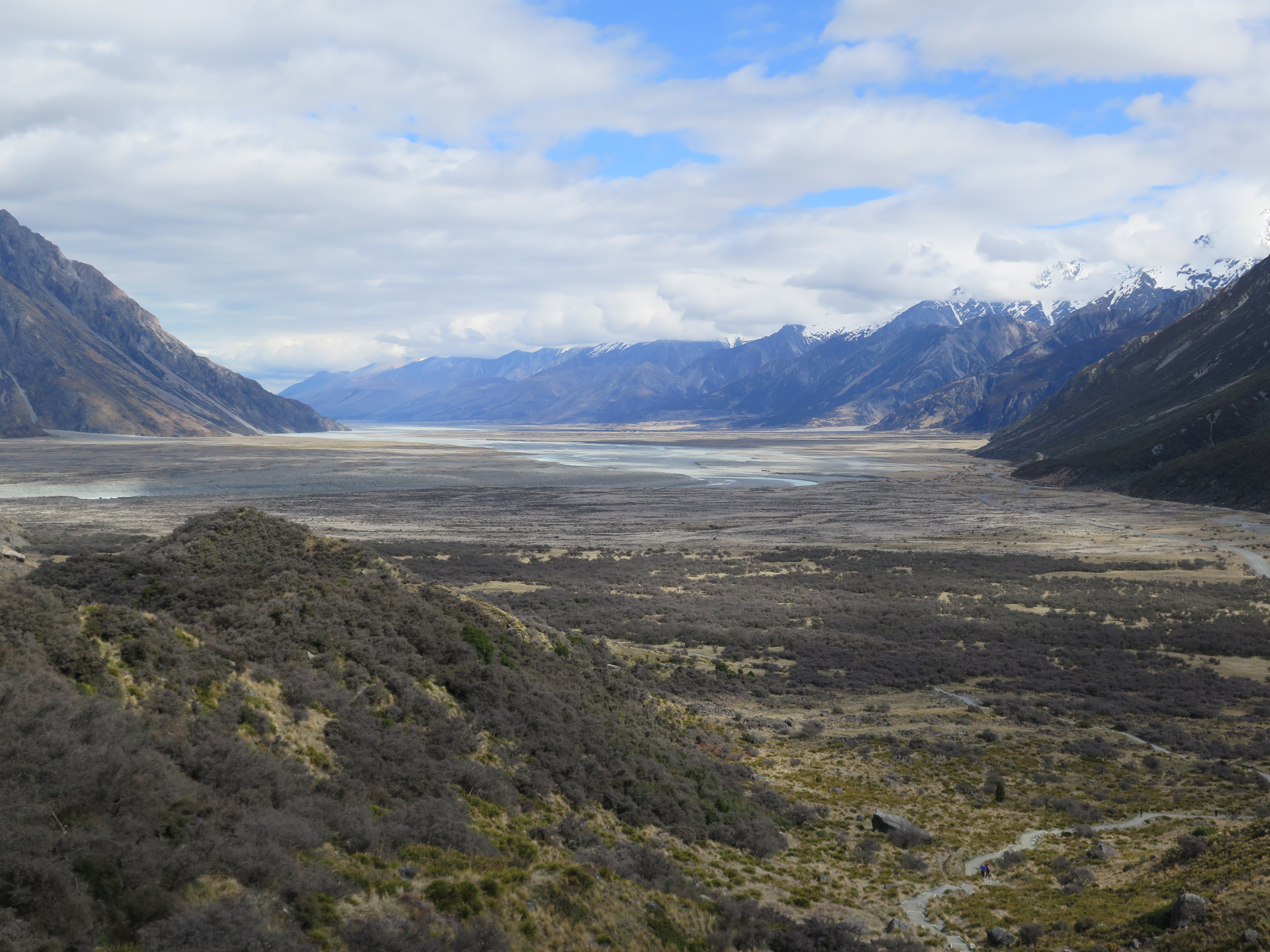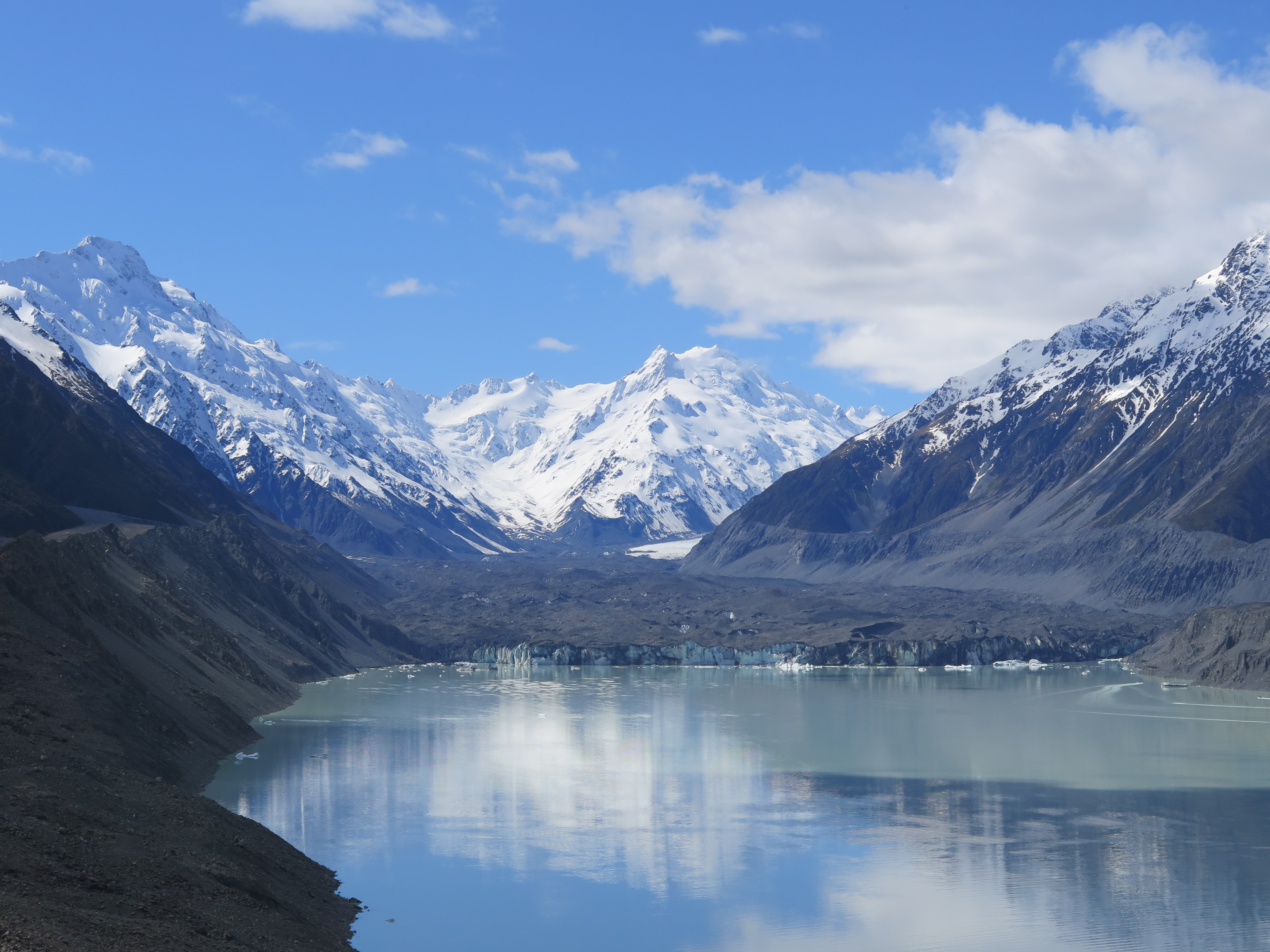Icebergs …. Turns out you don’t have to go to Antarctica to see them, you can see them in Mount Cook National Park. The process of ice parting company with the glacier is called calving and this happens naturally all the time. These icebergs can remain in the glacial lakes for some time as they slowly melt.
The walk we did this morning was along a path called the Hooker Track along to the Hooker Glacier. This glacier was named by Julius Haast after William Hooker – the Direct of the Royal Botanical Gardens at Kew. The track was fairly level and just over 3 miles in length. The track crossed the the Hooker River several times on suspension bridges and ended up at the south end of the Hooker glacial lake with an excellent view of the icebergs and the glacier they came from.

Despite the cloud being down and the glacier being covered in glacial rock deposits, it was still a stunning site – a lovely walk. The Hooker glacier is around 11 kilometres in length, but this is falling fast as the glacier retreats due to climate change.
After lunch we drove off a short distance into the next valley to look at another glacier to compare them! The next door valley is called the Tasman Valley and from the car park it is about a half hour walk up to a view point of the lake and glacier and more icebergs …. This time, the cloud had lifted and the sun came out, making for a magical scene.

The Tasman Glacier is a lot longer than the Hooker Glacier at around 23km as against around 11km for the Hooker. It is also a lot wider – as much as 4km in places and this makes it the largest glacier in New Zealand. However, like all of them, it is shrinking fast. In the picture above, the ice came all the way to Anne’s head in 1990. It is now retreating at between 473 and 833 metres per year.
On the way up to the Tasman Glacier viewpoint is a small side track to the Blue Lakes. These were blue when they were named, but are now murky green. This can also be attributed to the retreat of the glacier. Originally the lakes were fed through the moraine by glacier water. This glacial feed gives the lakes a distinctive blue colour, created by glacial flour, the extremely finely ground rock particles from the glaciers. However, as the glacier retreated, so the nature of the water in the lakes changed and now they are fed by rainwater, allowing the growth of algae and changing the colour to green.
The walk to the view point also gave an excellent view back south down the Tasman River valley to Lake Pukaki – used as a location for Lord of the Rings. It showed perfectly a u-shaped glacial valley. The glacier scours the valley out creating a flat bottom and steep sides and leaving behind erratics and moraines.

